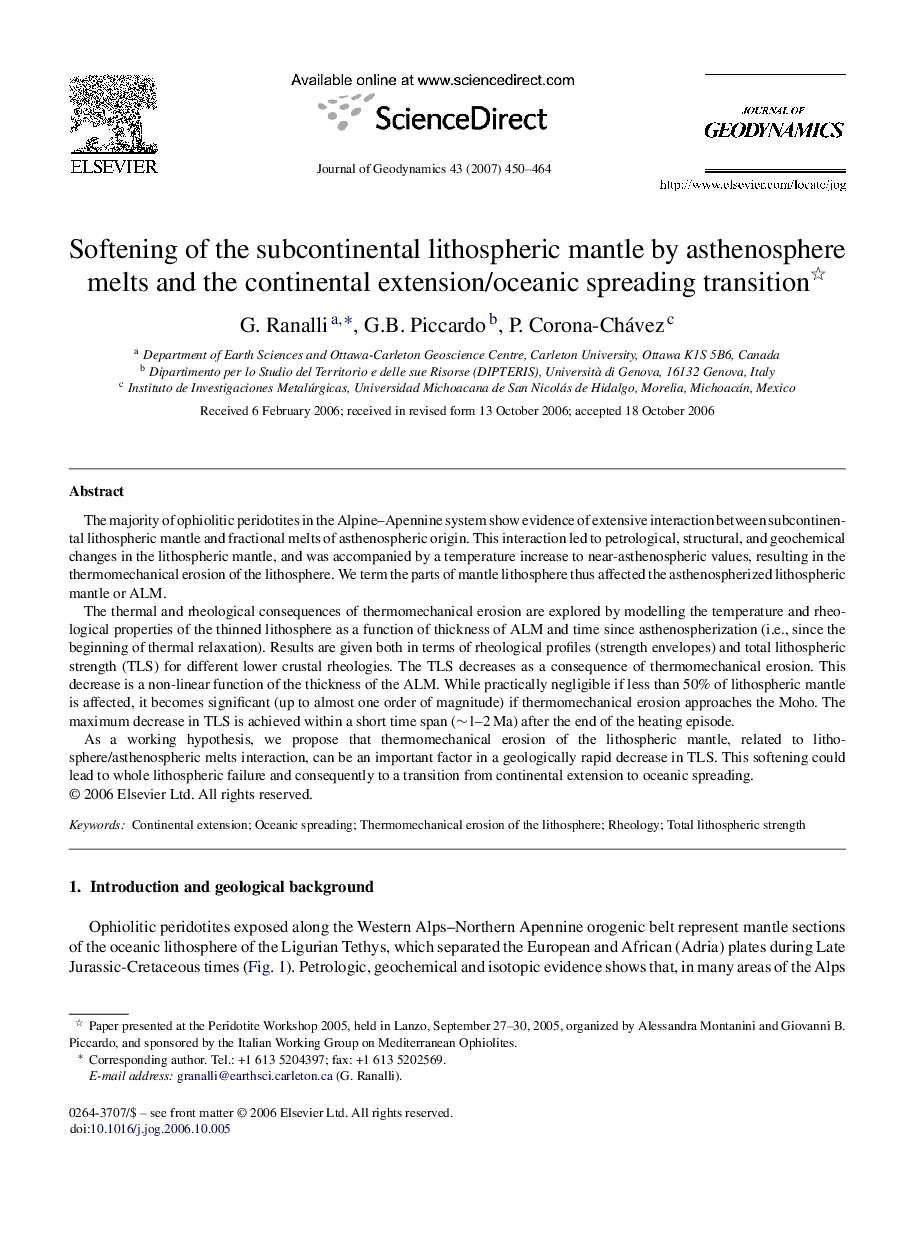| Article ID | Journal | Published Year | Pages | File Type |
|---|---|---|---|---|
| 4688798 | Journal of Geodynamics | 2007 | 15 Pages |
The majority of ophiolitic peridotites in the Alpine–Apennine system show evidence of extensive interaction between subcontinental lithospheric mantle and fractional melts of asthenospheric origin. This interaction led to petrological, structural, and geochemical changes in the lithospheric mantle, and was accompanied by a temperature increase to near-asthenospheric values, resulting in the thermomechanical erosion of the lithosphere. We term the parts of mantle lithosphere thus affected the asthenospherized lithospheric mantle or ALM.The thermal and rheological consequences of thermomechanical erosion are explored by modelling the temperature and rheological properties of the thinned lithosphere as a function of thickness of ALM and time since asthenospherization (i.e., since the beginning of thermal relaxation). Results are given both in terms of rheological profiles (strength envelopes) and total lithospheric strength (TLS) for different lower crustal rheologies. The TLS decreases as a consequence of thermomechanical erosion. This decrease is a non-linear function of the thickness of the ALM. While practically negligible if less than 50% of lithospheric mantle is affected, it becomes significant (up to almost one order of magnitude) if thermomechanical erosion approaches the Moho. The maximum decrease in TLS is achieved within a short time span (∼1–2 Ma) after the end of the heating episode.As a working hypothesis, we propose that thermomechanical erosion of the lithospheric mantle, related to lithosphere/asthenospheric melts interaction, can be an important factor in a geologically rapid decrease in TLS. This softening could lead to whole lithospheric failure and consequently to a transition from continental extension to oceanic spreading.
